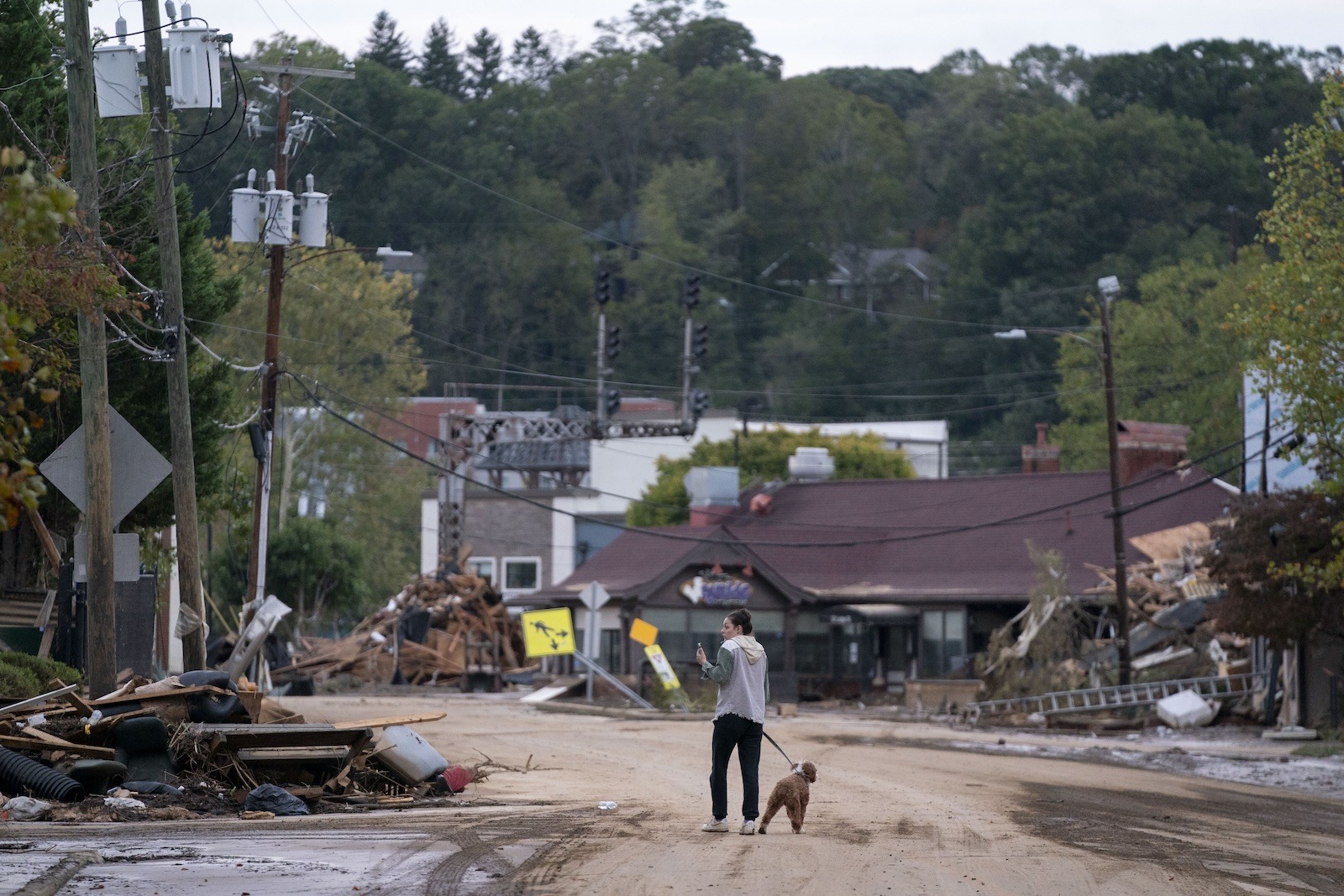Nearly 30 billion-dollar storms rocked the United States last year. Thanks to the National Oceanic and Atmospheric Administration’s disaster tracking database, we know that catastrophes are getting more expensive overall, and we’re seeing more of them crossing the 10-figure threshold. But the era of billion-dollar disasters is over, because the Trump administration announced late last week that it will no longer update the database.
Policymakers, elected officials, and experts in building, insurance, and real estate say that while the elimination of this essential resource feels politically motivated, its economic value was clear-cut, and often helped cities and companies assess risk with reliable, publicly accessible, and unbiased data.
NOAA created the Billion-Dollar Weather and Climate Disasters database in 1980 to track storms, floods, and other catastrophes that caused at least that much in damage. (NOAA did not respond to a request to comment for this story.) Although such events are rare, they account for more than 80 percent of the nation’s weather- and climate-related damages. In the 45 years since its launch, the database amassed 403 entries, totaling more than $3 trillion in inflation-adjusted dollars.
By scrupulously recording this data, NOAA could spot trends, including steep increases in the cost and frequency of disasters from one year to the next and one decade to the next. Insurance companies, state and local governments, researchers, and the public used this information to track climate risk over time, project it into the future, and plan accordingly.
Much of this record-keeping occurred at the National Centers for Environmental Information, or NCEI. The agency and its trove of climate data happens to sit in Asheville, North Carolina. The city is just one of many in six states that saw the blunt end of Hurricane Helene, the $78.7 billion storm that walloped the southeast in September. Western North Carolina saw one of the highest disaster costs per million residents last year, according to the database’s own calculations.
Local and state authorities gather their own data on disaster costs, but it’s often piecemeal. Avril Pinder, the Buncombe County manager, said the county’s preliminary calculations peg the losses from Helene at something like $80 million, the picture is not as complete as the more comprehensive insights NOAA provides. “We would all do our own [cost estimates] but NOAA has that bigger picture,” Pinder said.
Local governments rely on consultants and engineers to track disaster costs, but officials in Asheville told Grist that resilience measures meant to protect residents from future disasters are highly dependent on federal projections. For instance, in 2021, the city used NOAA data to make the case for major reconstruction of the dam at North Fork Reservoir, which provides 70 percent of Buncombe County’s water. That work, completed in 2021, is believed to have kept the dam from failing during the flooding that followed Helene. “Losing that broader national benchmark will likely make it harder to illustrate the growing scale of disasters and the importance of proactive investments like this,” Jessica Hughes, a city of Asheville communications officer, said.
This comes as the region’s assessment of its climate risk experiences a seismic shift. Many people believed they were largely immune to the climate crisis. “After Hurricane Helene, which occurred in an area that had once been hailed as a climate haven in western North Carolina, all the way up in the mountains, we now know that climate havens don’t really exist,” said Carly Fabian, a senior insurance policy advocate at consumer rights nonprofit Public Citizen.
According to Asheville realtor Hadley Cropp, people do deep research before deciding where to move. Helene called into question the idea of a “climate haven,” leading homebuyers to begin asking new questions and seeking detailed climate data before deciding whether and where to buy. “Helene has kind of shifted the landscape a little bit,” Cropp said. “Floodplains have been expanded and redesigned, and so people before Helene never even really asked about that kind of thing unless it was specifically in an obvious floodplain.”
Although insurance companies rely on several datasets to set rates, NOAA’s information was widely trusted, said Jason Tyson, spokesman for North Carolina’s Department of Insurance. “Because it’s coming from the government, it’s not encumbered by the rival databases that might have some sort of agenda,” he said. The industry is broadly understood to acknowledge climate change apolitically — because it’s costing them a lot of money, they simply have to understand it, predicting future risk in order to better guard against losses.
The database did not meticulously detail how climate change is fueling bigger and hotter wildfires, intensifying hurricanes, and exacerbating flooding. It provided economic quantification of what a given disaster cost, and how those costs mounted: In the 1980s, the U.S. experienced a little over three billion-dollar disasters a year. That tally skyrocketed to 23 annually between 2020 and 2024. “It is definitely not a plot of climate-change-increased disasters over time,” said Daniel Swain, a climate scientist at the University of California, Los Angeles. “It’s a plot of increased disaster losses for a variety of reasons that includes climate change, but it’s certainly not limited to it, and maybe isn’t even the primary driver in many cases.”
Yes, without a doubt, climate change has been making disasters more expensive for victims, government, and insurers. But at the same time, more people have been settling where hurricanes make landfall along the Gulf Coast, and in the wildland-urban interfaces where housing developments abut forested areas. That’s putting more and more structures in harm’s way. The U.S. has also been getting richer, meaning larger homes filled with more stuff.
Still, researchers used the database to help them understand how billion-dollar disasters are becoming more common, and what role climate change has to play in making hurricanes, heat waves, and floods worse. “It’s surprisingly difficult to get high-quality, reliable estimates of the economic damages associated with events, and the health effects associated with events,” said Kristina Dahl, vice president for science at Climate Central, a research and communication nonprofit. “So it’s a real loss there to the ability to start using that database to try to parse out the economic damages associated with climate change.”
NOAA was uniquely positioned to maintain such a database, as some of the information it ingested came from insurance companies. “They don’t necessarily want to disclose that to their competitors, but they were willing to disclose it to this nonpartisan science agency,” Swain said. “And so NOAA was able to get information to go into this database that it’s not clear anyone else is going to be able to have access to.” It’s unlikely, then, that anyone in the private sector will be able to build a comparable dataset. “This is to the dismay and even alarm of many people, for example, in the insurance industry,” Swain said, “which would be the industry best suited to potentially develop an alternative.”
Losing the database will have ripple effects, Swain added, because there’s a very long list of entities that use this information to determine where to rebuild after a disaster, where to regrow crops, and where to insure: federal agencies, local governments, the construction industry, the real estate industry, agricultural interests, and insurers. “Really,” Swain said, “who doesn’t need this information in some form starts to become maybe an easier question to answer.”
With or without the database, billion-dollar disasters will keep happening, and almost certainly with more frequency as the planet warms. “Just because we stop reporting this information, doesn’t mean that the disasters are stopping and that the damages are ending,” Dahl said. “It really just leaves us more in the dark as a nation.”
Source link
Katie Myers grist.org


